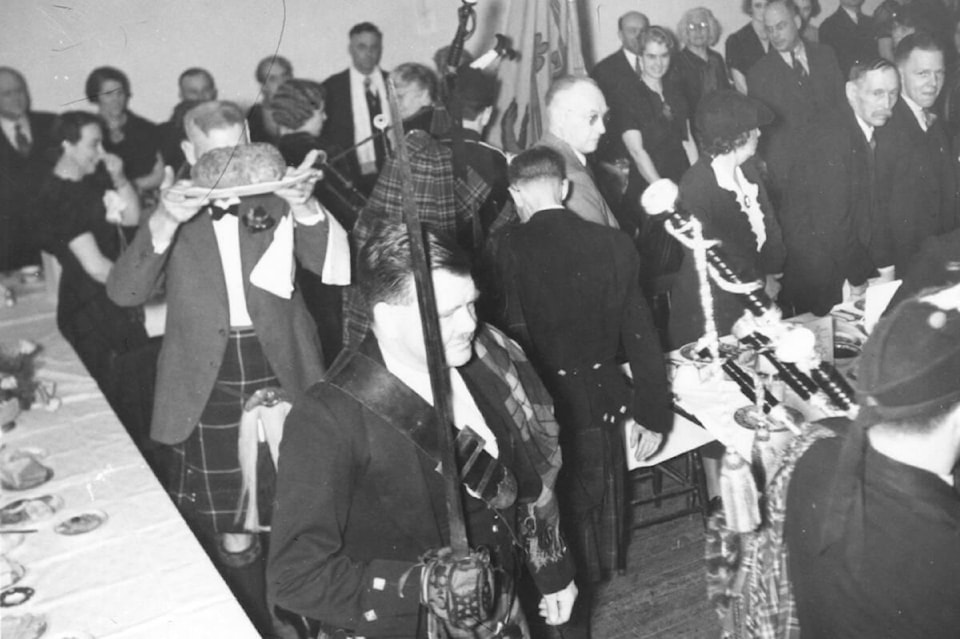It’s not the most eye-pleasing meal out there. But word is, Scottish haggis is actually not bad!
Haggis is a savoury pudding containing sheep’s ‘pluck,’ (heart, liver, lungs) minced with onion, oatmeal, suet, spices and salt, mixed with stock and traditionally cooked encased in the animal’s stomach.
It’s a grand part of Robert Burns Night, or Burns Dinner, held every Jan. 25 in honour of the famous Scottish poet.
“Burns Night is a time to enjoy Scottish traditions and celebrate the renowned poet Robert Burns with a classic combination of haggis, neeps, tatties, some reciting of poetry, and maybe even a warming dram,” it says on the Burns Night page on scotland.org. “It’s also an opportunity to celebrate Scotland’s enduring legacy of creativity.”
Neeps, or Swedes, is a turnip, and tatties refers to, of course, potatoes.
As the historical photo from the Museum and Archives of Vernon shows, haggis has been piped into Vernon gatherings since at least 1939, and the tradition continues courtesy of the Vernon branch of Sons of Scotland.
They’ve already held one Burns Dinner at the Schubert Centre, and a second dinner is set for Saturday, Jan. 27, at the ANAF Club featuring the music of Kilt.45.
Robert Burns’ most famous work is arguably the traditional Scottish song Auld Lang Syne, celebrated at New Year’s Eve functions worldwide as the clocks strike midnight. The lyrics were written by Burns in 1788. Translated, Auld Lang Syne loosely means ‘Old Times Sake.’
The song’s popularity grew in the 20th century, particularly after it was featured in the 1946 film It’s a Wonderful Life.
The first Robert Burns Night was held July 21, 1801, to mark the anniversary of his death. Burns died in 1796.




